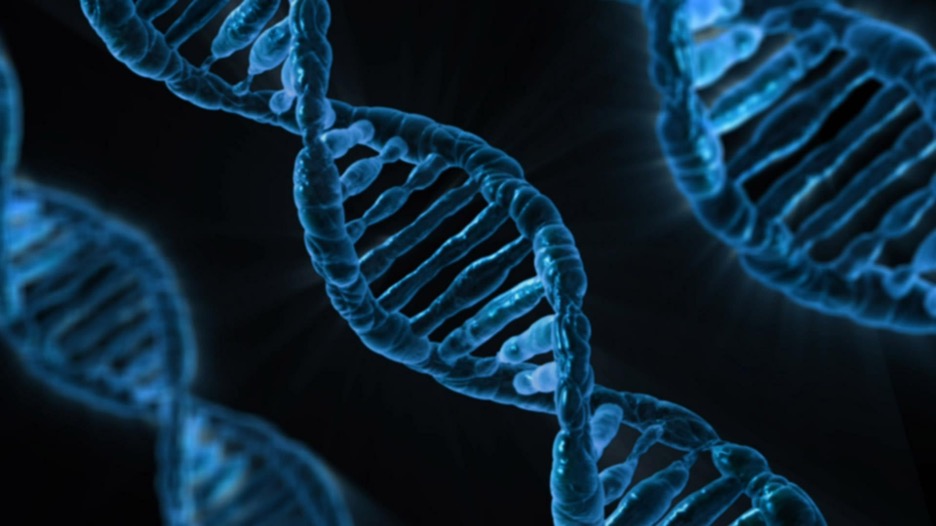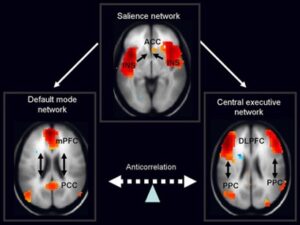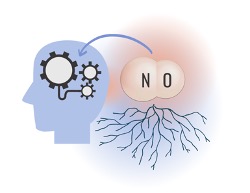
Figure 1: Researchers have found viral genetic materials within the human genome which are the result of retroviruses that infected our ancestors millions of years ago. Scientists refer to these viruses as human endogenous retroviruses (HERVs). HERVs have been linked to neurodegenerative diseases such as multiple sclerosis (MS). (Source: Public Domain Pictures, Виталий Смолыгин)
Viral infections have long been associated with neurodegenerative diseases. Several viruses in particular have been proven to alter neuronal activity and degenerate neurons either directly or indirectly through their ability to attack the nervous system and the host immune system (Nicolson, 2008). For instance, HIV infection of the central nervous system has been shown to cause cognitive impairment in subcortical regions of the brain (Römer, 2021). Moreover, rabies has been linked to a significant imbalance of calcium ions (Ca2+), a critical initiator molecule for the release of neurotransmitters between brain cells (Römer, 2021). This imbalance has been associated with neuronal death and other brain disorders such as Alzheimer’s disease (Römer, 2021). Both HIV and rabies are classified as exogenous viruses since they are “horizontally transmitted agents,” i.e., transmission occurring from one living individual to another. Another category of viruses, called endogenous viruses, act as “vertically transmitted agents,” meaning they transmit across different generations (such as from parents to offspring) (Rasmussen, 1997). Recent research has attempted to understand the impacts of the latter category on biological processes, and specifically, the effect of endogenous retroviruses on the onset and development of neurodegenerative diseases.
Endogenous retroviruses originate from viruses that infected our ancestors, leaving behind fragments of their viral genomes in our ancestors’ DNA. The viral DNA becomes part of the host genome through the work of “reverse transcriptase”, an enzyme that converts the retroviral RNA into double-stranded DNA. Another enzyme called “integrase” will then integrate the newly synthetize DNA fragments into the host genome (Seladi-Schulman, 2019). Those fragments became part of our modern genetic makeup through vertical transmission to the descendants of our ancestors (Khodosevich, 2002). It is estimated that 8% of our DNA stems from endogenous retroviruses (HERVs) (Padmanabhan Nair, 2021). Mutations in those viral genetic elements have made them lose their ability to encode for proteins, so they are often referred to as “junk DNA.”
However, current research suggests that some genetic elements from Human Endogenous Retroviruses may contribute nonetheless to diseases such as cancer and neurodegenerative diseases (Padmanabhan Nair et al., 2021). For example, viral proteins of the groups HERV-W, named after the tryptophan (abbreviated Trp or W) tRNA primer it uses for reverse transcription and HERV-K, named for its acid lysine (abbreviated Lys or K) tRNA primer, have been observed in patients with multiple sclerosis, a neuronal disorder in which the host immune system damages the protective coating around the nerves (Römer, 2021). In other cases, it has been suggested that a disease state (such as cancer) can activate or upregulate silenced regions of DNA, including HERV sequences (Zhang, 2019).
Numerous scientific studies have focused on HERVs to establish the correlation between HERVs and disease pathogenesis and progression. It is important to note that these studies do not assert whether HERVs can cause a disease or simply emerge as a consequence of a previous infection. To overcome this limitation, Padmanabhan Nair and colleagues at the Institute of Virology, Helmholtz Zentrum München in Germany have used the CRISPR (Clustered Regularly Interspaced Short Palindromic Repeats) activation (CRISPRa) method to directly investigate the impacts of the activation of a specific group of HERVs in human embryonic stem cells on cortical neuronal development (Padmanabhan Nair, 2021).
The CRISPR system was first identified in bacteria – it is a lot like a bacterial immune system that bacteria use for anti-viral defense (Jiang 2017). With the CRISPR system, the bacteria capture pieces of viral genetic material and use them to make DNA fragments known as CRISPR arrays (Jiang 2017). These arrays are used by the bacteria as a form of memory. When the same virus or a closely related virus invades the bacteria, it transcribes the CRISPR arrays into RNA segments to target the viral DNA. An enzyme (endonuclease) is also produced – the CRISPR-associated 9 (cas9) complex, which cuts the viral DNA apart to stop the infection before it occurs (figure 1).
Now, the CRISPR-cas9 system is being used a gene editing tool, enabling scientists to target specific DNA regions of interest more efficiently and accurately. In CRISPR-based experiments, scientists often use Cas-9 in combination with a guide RNA (gRNA), an RNA molecule that binds to the Cas9 protein. The CRISPR-cas9 system determines, based on the gRNA sequence, the location at which Cas9 protein enzyme will cut DNA (Jiang, 2017).
In CRISPRa experiments, Cas9 is used, but the cas9 protein is deprived of its ability to cut DNA, although it can still localize to and identify sites of interest with the help of gRNA. Padmanabhan Nair and colleagues used an H9-dCa9-VP64 embryonic stem cell line with gRNAs targeting the Long Terminal Repeats (LTRs), which are transcriptional elements for viral gene expression, of a specific HERV-K subgroup, the human mouse mammary tumor virus like-2 or HERV-K(HML-2), to investigate how its transcriptional activation damages cortical neurons (Padmanabhan Nair, 2021).
Through this CRISPR-based approach, Padmanabhan Nair and colleagues used different gRNAs targeting different regions of HERV-K(HML-2) LTRs, an inhibitor for cell death pathways. They found that cortical neurons where HERV-K(HML-2) was activated exhibited a significant decrease in axon or dendrite length compared to control cells. However, the same results were not observed in other cells (for example dopaminergic cells) even though the expression levels of HERV-K(HML-2) were unchanged, suggesting that the brain impairment by HERV-K(HML-2) is neuron-type-specific (Padmanabhan Nair, 2021).
To investigate the changes of viral HERV-K(HML-2) proteins in embryonic stem cells, the researchers analyzed HERV-K(HML-2) activation effects in neurogenesis. They observed neuronal activity and morphology alterations at the very beginnings of neuron development and differentiation (ultimately the beginning of overall brain development) (Padmanabhan Nair et al., 2021).
Neurodegenerative diseases are often linked with the presence of viral proteins from several HERV groups (Padmanabhan Nair, 2021). As such, a deeper understanding negative neural impacts of HERV activation is an extremely valuable finding. It might open up a whole new field of research for the treatment of patients with neurodegenerative diseases.
References
- Douville, R., Liu, J., Rothstein, J., & Nath, A. (2011). Identification of active loci of a human endogenous retrovirus in neurons of patients with amyotrophic lateral sclerosis. Annals of Neurology, 69(1), 141-151. doi:10.1002/ana.22149
- Jiang, F., & Doudna, J. A. (2017). CRISPR–Cas9 structures and mechanisms. Annual Review of Biophysics, 46(1), 505-529. doi:10.1146/annurev-biophys-062215-010822
- Khodosevich, K., Lebedev, Y., & Sverdlov, E. (2002). Endogenous retroviruses and human evolution. Comparative and Functional Genomics, 3(6), 494-498. doi:10.1002/cfg.216
- Nicolson, G. L. (2008). Chronic bacterial and viral infections in neurodegenerative And neurobehavioral Diseases. Laboratory Medicine, 39(5), 291-299. doi:10.1309/96m3bwyp42l11bfu
- Padmanabhan Nair, V., Liu, H., Ciceri, G., Jungverdorben, J., Frishman, G., Tchieu, J.,…Vincendeau, M. (2021). Activation of herv-k(hml-2) disrupts cortical patterning and neuronal differentiation by increasing ntrk3. Cell Stem Cell. doi:10.1016/j.stem.2021.04.009
- Rasmussen, H. B. (1997). Interactions between exogenous and endogenous retroviruses. Journal of Biomedical Science, 4(1), 1-8. doi:10.1007/bf02255587
- Römer, C. (2021). Viruses and endogenous retroviruses as roots for neuroinflammation and neurodegenerative diseases. Frontiers in Neuroscience, 15. doi:10.3389/fnins.2021.648629
- Seladi-Schulman, J., PhD. (2019, March 1). What Is a Retrovirus? Healthline. https://www.healthline.com/health/what-is-a-retrovirus#virus-vs-retrovirus
- Temin, H. M. (1986). Retroviruses and evolution. Cell Biophysics, 9(1-2), 9-16. doi:10.1007/bf02797372/
- Zhang, M., Liang, J., & Zheng, S. (2019, March). Expressional activation and functional roles of human endogenous retroviruses in cancers. Retrieved August 08, 2021, from https://www.ncbi.nlm.nih.gov/pmc/articles/PMC6590502/
Related Posts
What Drives Musical Pleasure? Scientists Now Have the Name
Figure 1: Why is music so rewarding for the human...
Read MoreThe importance of the Default Mode Network (DMN) in Post-Traumatic Stress Disorder (PTSD)
Figure 1: Neural imaging of the default mode network (pictured...
Read MoreThe Brain and Sign Language — Evidence of a Universal Language Center?
Figure 1: The English alphabet and numbers 1-9 as signed...
Read MoreUniversality of the Face: New Research Points to a Shared Human Commonality in Emotional Expression
Figure 1: Examples of emotional expressions Source: Andrea Piacquadio from Pexels Raising...
Read MoreThere’s NO Telling What Nitric Oxide Might Bring to Alzheimer’s Disease Research
Figure 1: As Alzheimer’s disease research begins to shift away...
Read MoreChildhood Unpopularity May Increase Risk of Cardiovascular Disease in Adulthood
Figure 1: Childhood experiences are widely considered to affect adult...
Read MoreLord Charite Igirimbabazi






